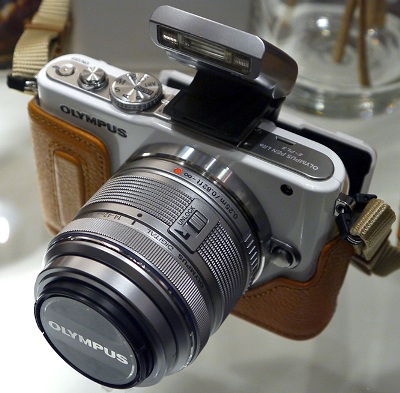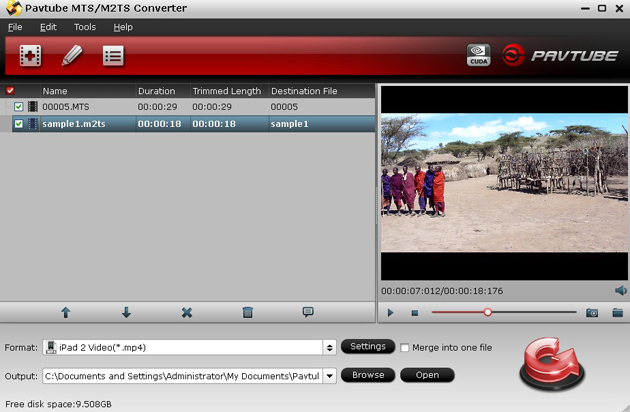The Olympus E-PL3 combines a small physical size with a lots of external control points in a stylish, attractive body. Among the traits it inherits from its predecessor, the E-PL2, are in-camera raw conversion, a nice selection of art filters and of course Olympus' eminently customizable camera and menu options. Welcome additions range from the cosmetic, in the form of a more contemporary menu design, to the functional, with a tilting rear LCD screen, AF assist lamp and Full HD video capture.

Conclusion - Pros
Very good low ISO image quality and resolution
Fast and responsive operation
Fast, accurate autofocus
Full HD AVCHD video
Attractive styling and solid, metal construction
A high number of external controls for its body size
Tilt-screen LCD
AF assist lamp
In-camera Raw edit capability
High degree of camera and menu customization
Art filters offer fun, creative effects with numerous variants
Conclusion - Cons
High ISO noise performance lagging behind competitors' newer sensors
Overly aggressive default noise filter setting for JPEG output
Digital IS for video capture can introduce unnatural-looking footage
Size and positioning of control dial makes its use somewhat awkward
Lack of a hand grip makes for a less comfortable handling experience
16x9 format LCD is less than ideal for viewing 4:3 still images
Use of clip-on flash precludes use of an EVF or any other accessory port item
No live view in continuous shooting mode
No touchscreen interface
No orientation sensor means you have to manually rotate images shot in portrait orientation
Complex menu system (for its target audience)
Movie mode preview is inaccurate (camera crops-in when you press the record button)
Import Olympus E-PL3 AVCHD to Premiere
Many Olympus users may have encountered import Olympus AVCHD files to premiere problem, Olympus, Sony and Panasonic cameras and camcorders recorded videos many are in AVCHD format, this format is well to record video data, but it’s not compatible with so many editing software, such as Adobe Premiere Pro, you can’t edit Olympus E-PL3 AVCHD in premiere smoothly due to the format and codec.
What’s the best format for use in Premiere on windows? The best format is WMV format, it’s the best compatible format on Windows platform, now follow the way to transcode Olympus E-PL3 AVCHD to WMV format for Adobe Premiere
1.Download Pavtube MTS/M2TS Video Converter, this is an excellent Olympus E-PL3 MTS converter for Adobe Premiere. Install and run it.

2.Import Olympus recorded AVCHD files to the AVCHD MTS to Adobe Premiere converter.
3.Click format bar to choose output format for Premiere, please click and choose Adobe Premiere -> WMV (VC-1) (*.wmv).

4.You can click settings button to adjust output parameters, such as resolution, bitrate, etc.

5.Click convert button in the main interface to start converting Olympus E-PL3 AVCHD files to WMV format.
Pavtube Olympus AVCHD MTS Converter for Adobe Premiere can convert Olympus E-PL3 AVCHD files at a fast speed, video and audio synchronization are perfect guaranteed. If you also need to convert DVD and Blu-ray movies, you can try Blu-ray video converter ultimate, it’s all in one converter that can handle all the videos.
For more guides and tips, please visit MTS column on Pavtube website, or you can read Olympus video to FCP guide to learn more solutions.
Useful Tips
- Best 5 TS Video Converter for macOS Sierra
- How to import AVCHD/MTS/MKV/AVI/MXF to Apple Aperture 3 on Mac
- Convert Humax recording 1080p videos to FCP and burn TS/MTS to DVD on Mac
- Panasonic Lumix DMC-GH3 Review: Transcode GH3 AVCHD to ProRes 422 for FCP (X)
- Burning AVCHD to DVD--how to convert and burn AVCHD(.mts) to playable DVD on Mac
- Convert Panasonic HC-X900, HC-X900M AVCHD 3D MTS on Mountain Lion

 Home
Home Free Trial MTS/M2TS Converter
Free Trial MTS/M2TS Converter





